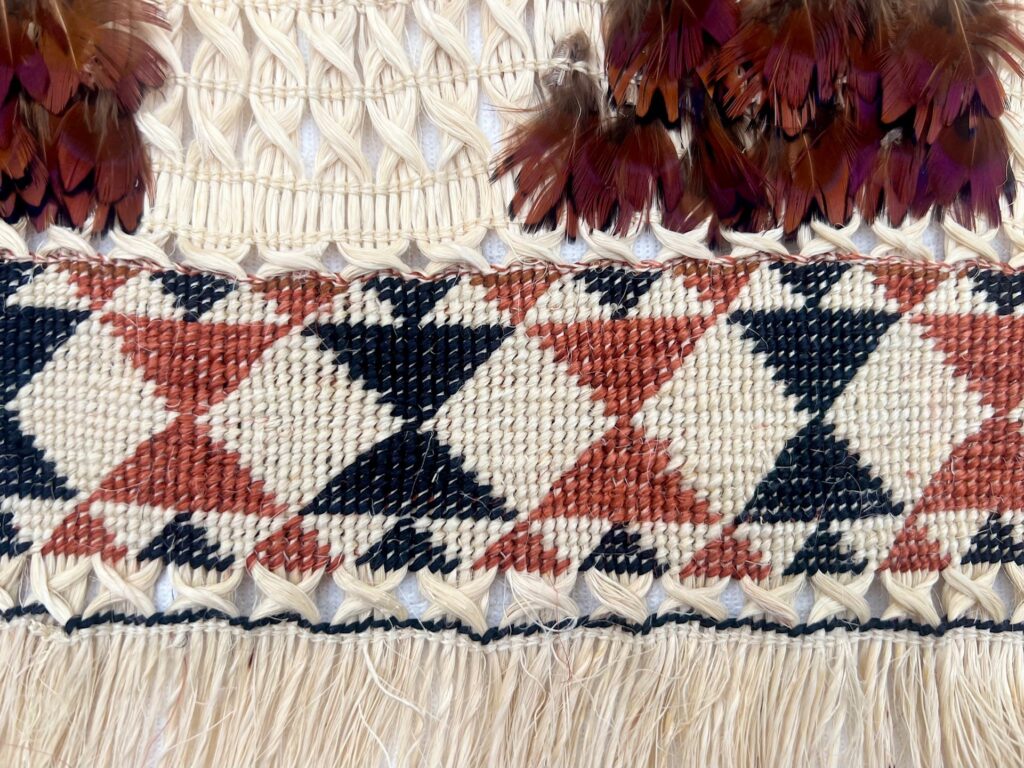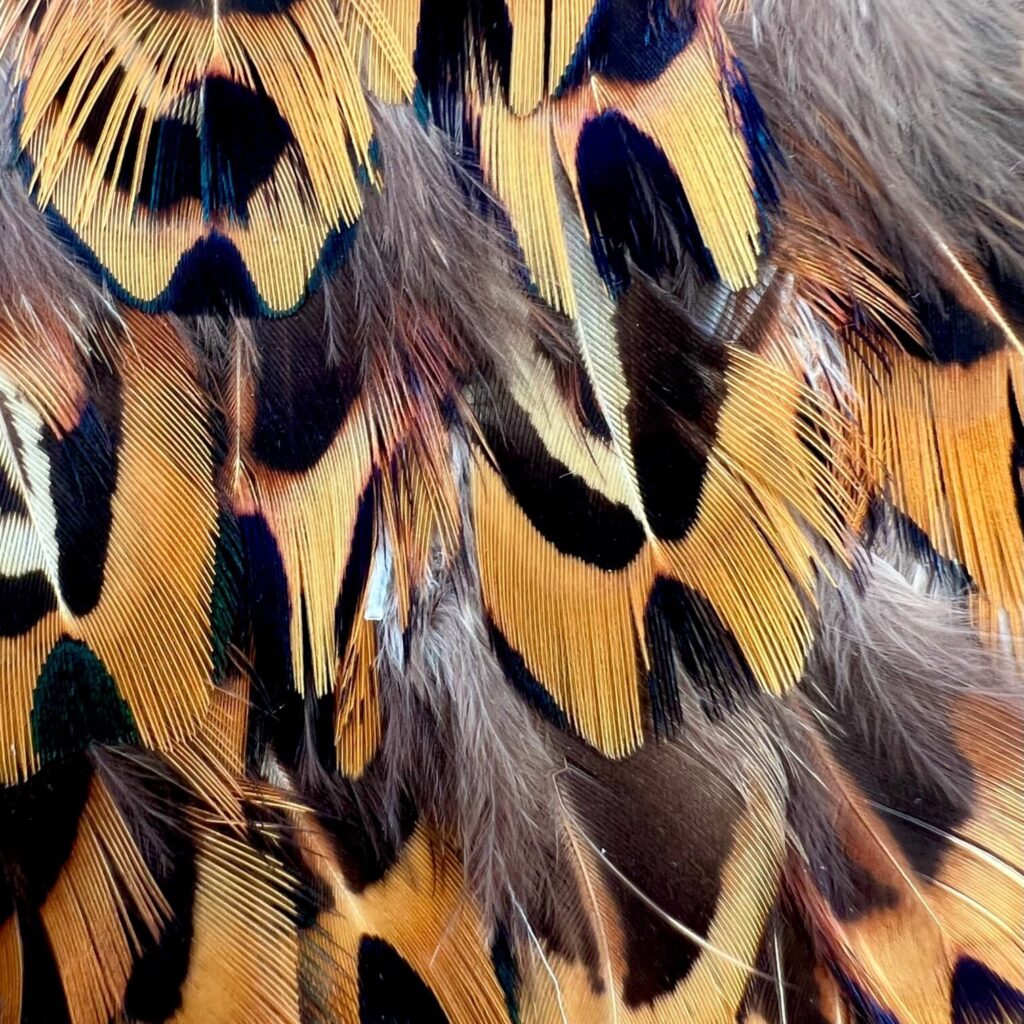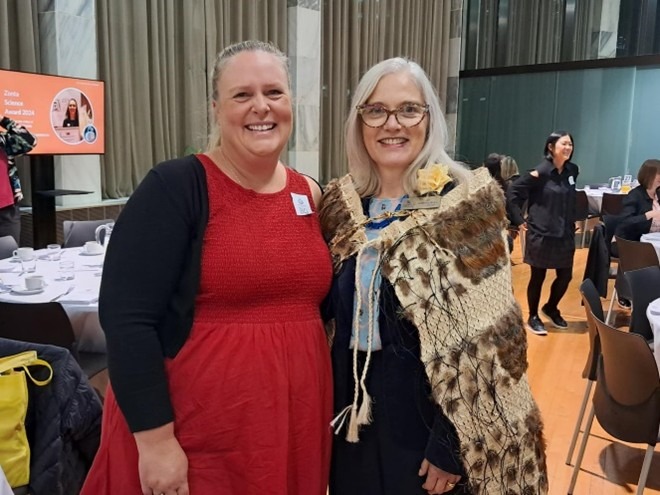The District 16 Kakahu.
District 16 Zontians have long acknowledged New Zealand’s unique bicultural foundation, with borrowed cloaks worn by prominent New Zealand Zontians on a number of important international occasions. At the International Convention in Melbourne in 2006, Zontians suggested to Governor-Elect Lynette Grave that District 16 should have a cloak of its own. Lynette subsequently discussed this with former Auckland Zontian and cultural advisor, Lorna McIntosh, and with the Māori Women’s Welfare League. Lynette was put in touch with Christchurch-basedNgāi Tahu artist and weaver, Ranui Ngarimu, (Kāti Māmoe, Ngāi Tahu, Ngāti Mutunga). The late Te Aue Davis OBE, CNZM, (Ngati Maniapoto, Ngati Uekaha), was the principal weaver of the District 16 Kakahu.
In Dunedin in May 2008, Ranui Ngarimu, Te Aue Davis, Dr Khyla Russell, and Huata Holmes facilitated the handover ceremony of the finished taonga, when District 16 Governor Lynette, was enveloped with its love and mana. The Kakahu was honoured with the name Tohu Aroha(Gift of Love), chosen by Ranui Ngarimu and Te Aue Davis in recognition of the work of Zonta for women nationally and internationally. Individual donations by many Zontians funded the purchase of Tohu Aroha. Each biennium, this treasured object is placed in the care of the District 16 Governor who wears it on important national and international occasions. Tohu Aroha always attracts much attention for its beauty and as an expression of esteem and respect for New Zealand’s bicultural origins.
Definitions: A kakahu is a prestige cloak. There are various types of kakahu, including korowai (a fine flax cloak decorated with tassels), kahu kuri (a dog-skin cloak), kahu huruhuru (a feather cloak) and kaitaka (A chiefly cloak made of finely woven beaten flax fibre or muka. Early Europeans thought they resembled a Roman toga.)
Sources:
Empowering Women: A History of Zonta International in New Zealand, 1965-2016, by Jennifer Loughton, 2017, p.p. 336-341.
Collections, Museum of New Zealand/ Te Papa Tongarewa, https://collections.tepapa.govt.nz/, accessed March 19 2020.
© Jennifer Loughton, January 2023
Story of the Zonta D16 Kakahu
Past Governor Phillipa Jacobs Lory with Ranui Ngariumu ONZM. She is the weaver of our Kakahu. The name is called Kakahu Aroha and this is named for Zonta, with the love that we give to our community.

The Diamond Pattern
The diamond pattern along the bottom weaving – the red is the bark and the black was the mud to get close to our Zonta colours as could be done.
The Diamonds are representing you, our Zonta members, protected by the small teeth along the top and the bottom of the diamonds, they are called – Niho, shape (triangles) representing the Taniwha (the Taniwha can be for good, not just for bad) which are protecting Zonta (the diamonds).

The Feathers
The feathers on the Kakahu are pheasant feathers that were sourced from the North Island.
She designed and then was the weaver of this beautiful Kakahu, which has been sourced from the land itself by Ranui, completely from scratch.


Kakahu vs Korowai
It is called a Kakahu, not a Korowai. What is the difference you may ask? This is named after what it is made from.
For example, if it was a Korowai, it would have the tassels all over the garment. Because it has them only at each end or side, it is called a Kakahu. Another example is if it was made of Kiwi feathers, it could be called a Kakahu Kiwi. All have equal prestige and are to be worn as often as possible.
You are welcome to touch it when you see our Governors wear it, Ranui said it is to be seen and loved. We must wear it, wear it, wear it! Ranui said to take it to Area Meetings so you all can see it and touch it.
It is not to be worn while eating – only due to keeping it clean – as it can not be cleaned as other clothes can. The not-eating-in-it has nothing to do with cultural respect reason. And yes it can be sat in.

Worn With Pride
Every Governor wears the kakahu with pride and they enjoy representing the District at many events.
Pictured is June Matthews (Foster Hope Wellington) and Governor Jen Mckinlay- Birkin (2024 -2026).
When Past Governor Phillippa Jacobs Lory wore it for the first time at the Governors Changeover Dinner, she was quite overwhelmed.
Now knowing all of this information helps us to realise how extremely special it is. It is special to all those that wear it, and they wear it with pride for our whole District to enjoy.

